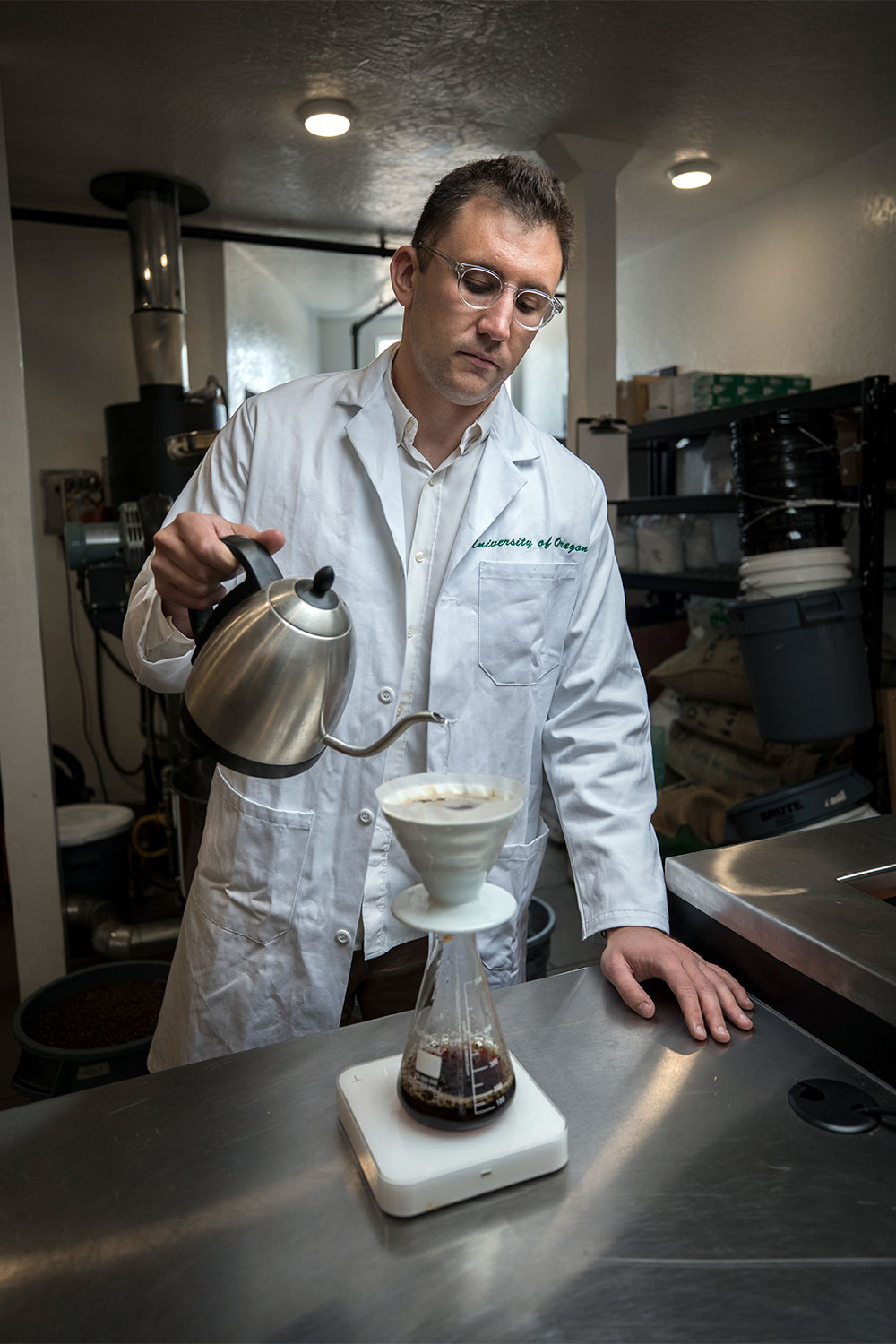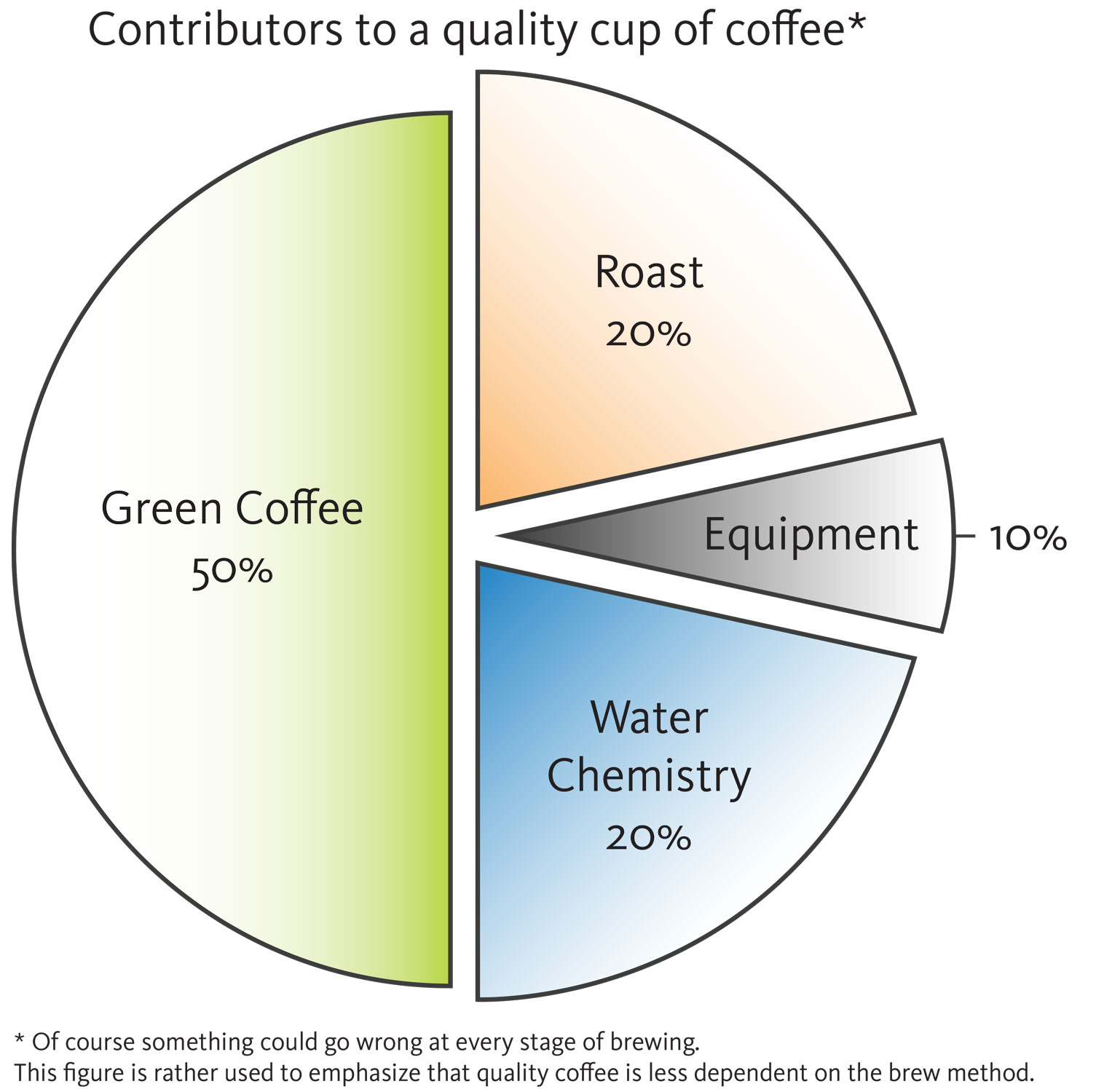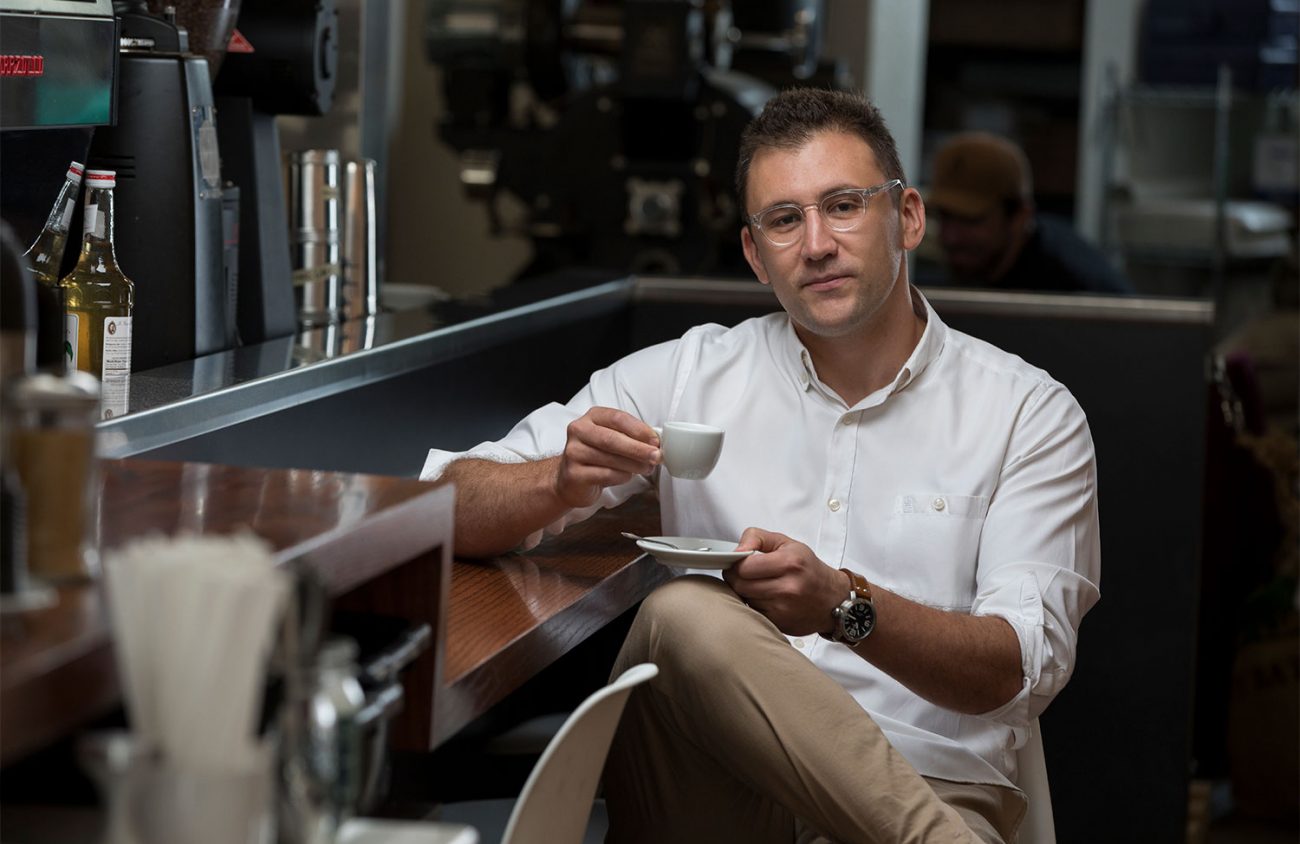The beginning of Christopher Hendon’s quest to understand how to make a good cup of coffee sounds like the setup to a joke: A chemistry graduate student walks into a coffee bar.
Indeed, the barista who greeted him could have laughed. After all, Hendon knew nothing about coffee. He preferred lattes, composed largely of warm milk. Instead, the barista accepted Hendon’s tastes and schooled the willing student with artful brews of specialty beans grown around the world.
Then came a batch of roasted beans from London. They tasted unexpectedly bad, both by espresso and filter methods. The barista appealed to the budding chemist for a solution. The answers launched Hendon into an unplanned scientific sideline. For the last 15 years, he has probed how the water chemistry, temperature and surface area affect the flavor extracted from ground beans.
Coffee isn’t Hendon’s main scientific gig. He was hired two years ago as part of the University of Oregon’s Energy and Sustainable Materials Initiative. But it’s fair to say a talk on computational chemistry would not have packed the house for two recent science pub lectures — even for environmentally conscious Eugeneans who would applaud the potential sustainable energy applications. No, people were keenly interested to hear Hendon spill the beans on how to brew the perfect cup of coffee.
The perfect cup turns out to be an elusive and complex goal. Let’s break down a few reasons why.
First, at least half the quality of a cup of coffee arises from the bean itself, Hendon estimates. Coffee grows as the seeds of fruit on trees in narrow climate zones in tropical mountainous areas. The type of plant, growing conditions and soil, and way the seeds are dried all influence the flavor. “Buy a good green product, get a good brown product,” Hendon said in early January at the Quack Chats pub talk at the Downtown Athletic Club.
Enlarge

“You can like what you like,” Hendon says. Many people enjoy the coffees from Brazil, Sumatra, Vietnam and Hawaii (“all chocolate and nuts”), even though they may score lower on perceived acidity and complexity prized by professional tasters.
Pro tip: High price may not mean better flavor. The most expensive coffee on Earth, Panama Geisha, whose premium lot sold for $661 a pound last year, “tastes like perfume, like Channel No. 5 without the ethanol,” Hendon said at the June OMSI science pub at Whirled Pies. It’s not for everyone.
Finally, Hendon hopes you will discover your own way by understanding the factors you can control, such as water chemistry. “In the end, if I teach you what the water is doing, you can arrive at a recipe good for you,” he says at his UO office.
Water was Hendon’s first experiment in the science of coffee. Remember the coffee bar? It was in Bath, UK, famous for its mineral-rich water. Water translates flavors in beans to coffee. Hard water — especially if rich in calcium and magnesium — pulls distinctive flavors from many coffee beans, according to Hendon’s computational chemistry analysis. The problem beans that started this story were tuned to local water in London, a naturally hard water stripped of most of its minerals, and the flavors were lost in translation in Bath.
Pro tip: “Each bean is roasted to taste optimal when brewed with the water it was roasted to,” Hendon and the baristas concluded. FYI, Eugene has soft water.
Enlarge

Hendon expanded on the paper, writing a book, Water for Coffee, at the same time he wrote his Ph.D. thesis. He self-published the book to exacting and indestructible specifications. It’s waterproof and flame-proof. It sold 11,000 copies. It basically a chemistry text. It opens with the periodic table. Coffee appears on the title page and then at the very end of the book, kind of like a test on what you learned about water chemistry. An updated second edition will be released in May by a UK publisher.
As a lark, three days before he left Bath for a postdoctoral fellowship at the Massachusetts Institute of Technology, Hendon set up an experiment to test the effect of temperature on grinding. Deeply frozen beans (think dry ice) produced a more consistent particle size. They co-authored a second scientific paper, and the combined findings took Hendon and the barista to fifth place in the World Barista Championships in 2014 and 2015, representing Great Britain.
Pro tip: Chill your beans. Use airtight packaging.
Hendon is wrapping up a study that unpacks the conventions of espresso. He conducted some of the experiments at Tailored Coffee. “For us in the industry, there are standards on how you pull a shot of espresso,” says Brian Sung, owner of Tailored and of Brails on Fifth. Hendon asked them to “try smaller particles, less coffee, and pull shots 10 seconds faster. When you pull a shot quicker, you lose a lot more body, but you get a lot sweeter juicier coffee. That matches our roast style matches. Our biggest goal is to get the sweetest coffee as possible.”
Pro tip: Filtered coffee contains more caffeine than espresso. Also, dark roast coffee doesn’t have more caffeine than light roast.
Hendon has even more unanswered questions now then when he started, and he thinks more science can be brought to bear on the topic: mathematics, physics, psychology, inorganic chemistry, biology and more. He’s in the early stages of designing and raising money for a coffee research lab for undergraduate research, disguised as a coffee bar on the ground floor of his science building. He expects it to be built this summer. It will be a teaching tool and create a pipeline into the industry for scientists training at Oregon, he says.
